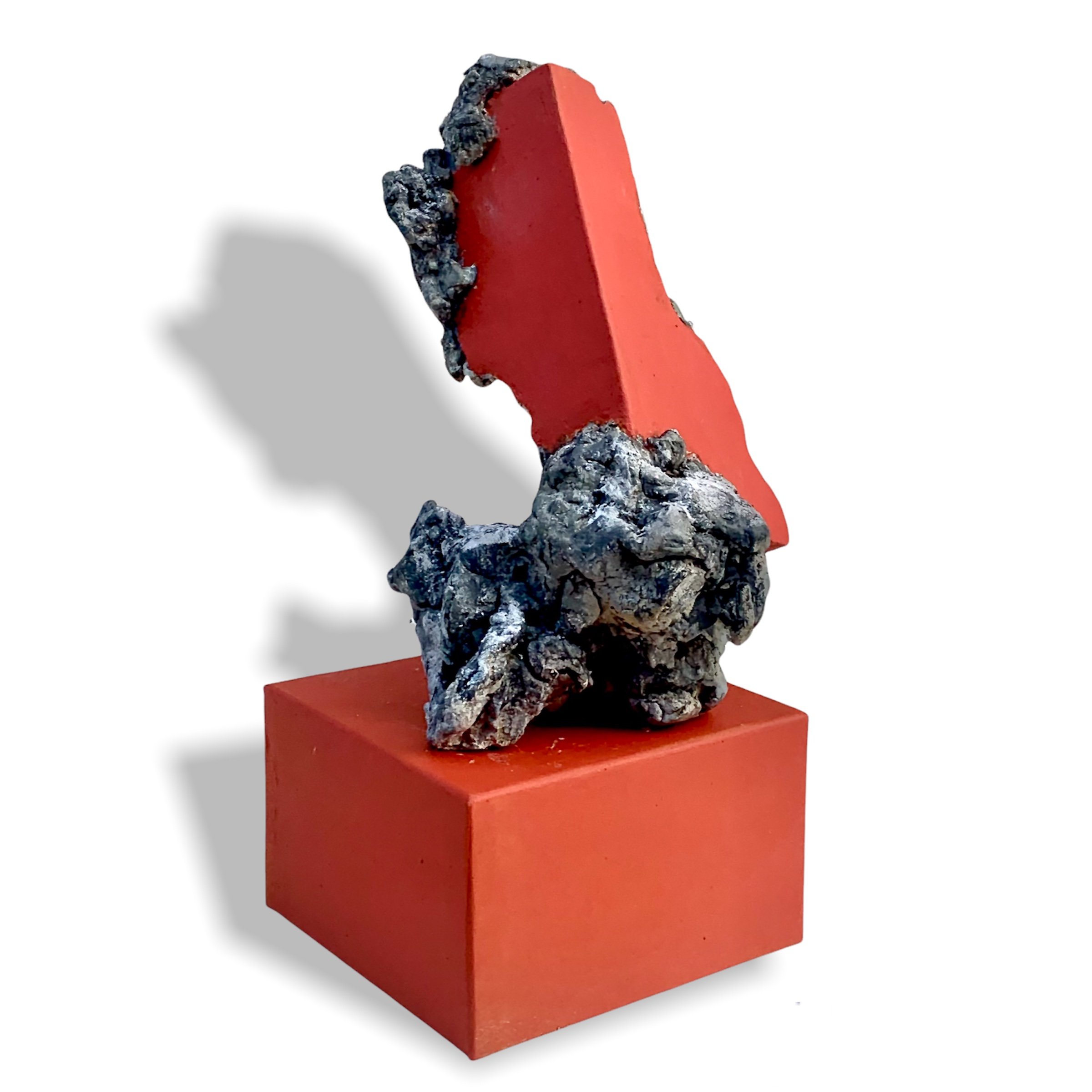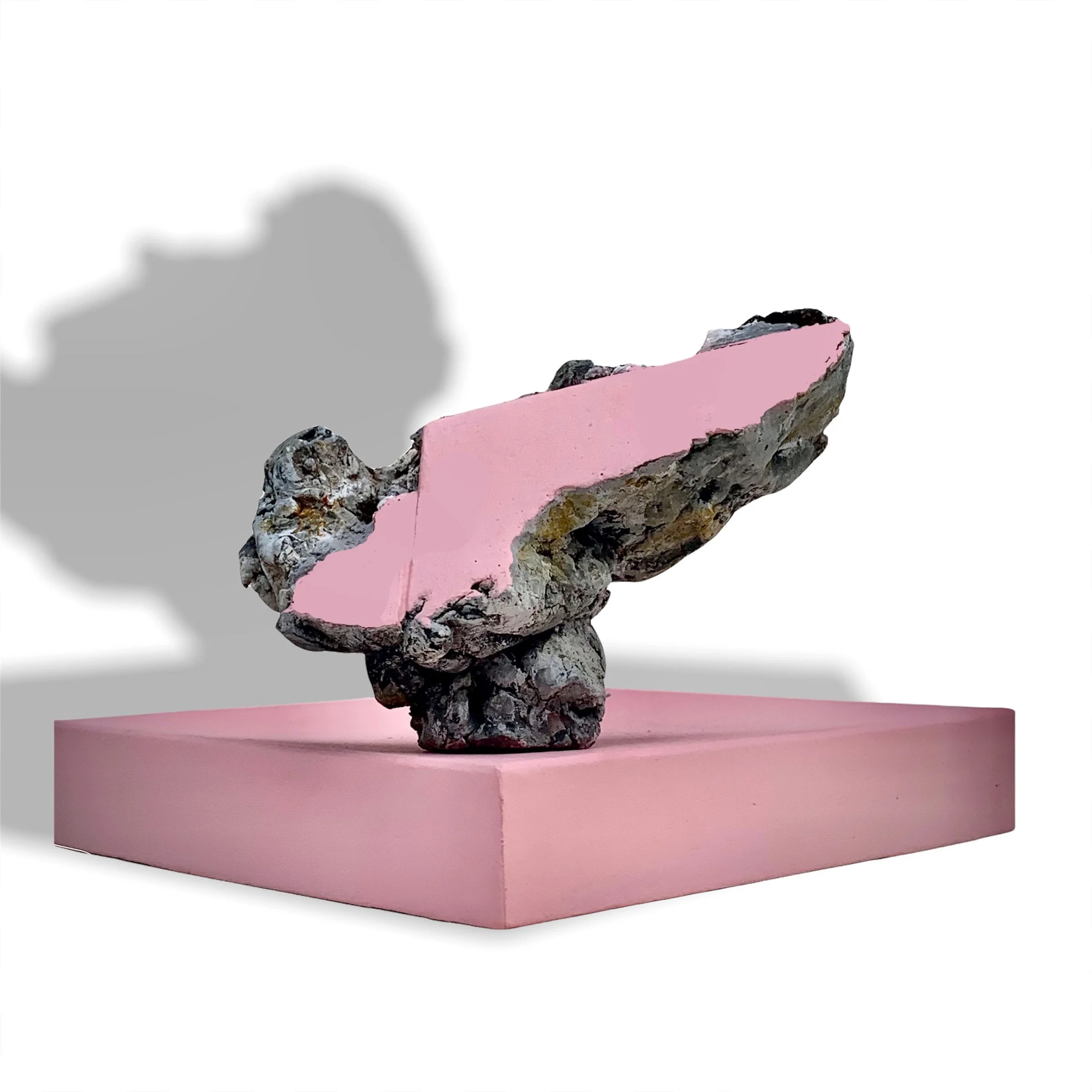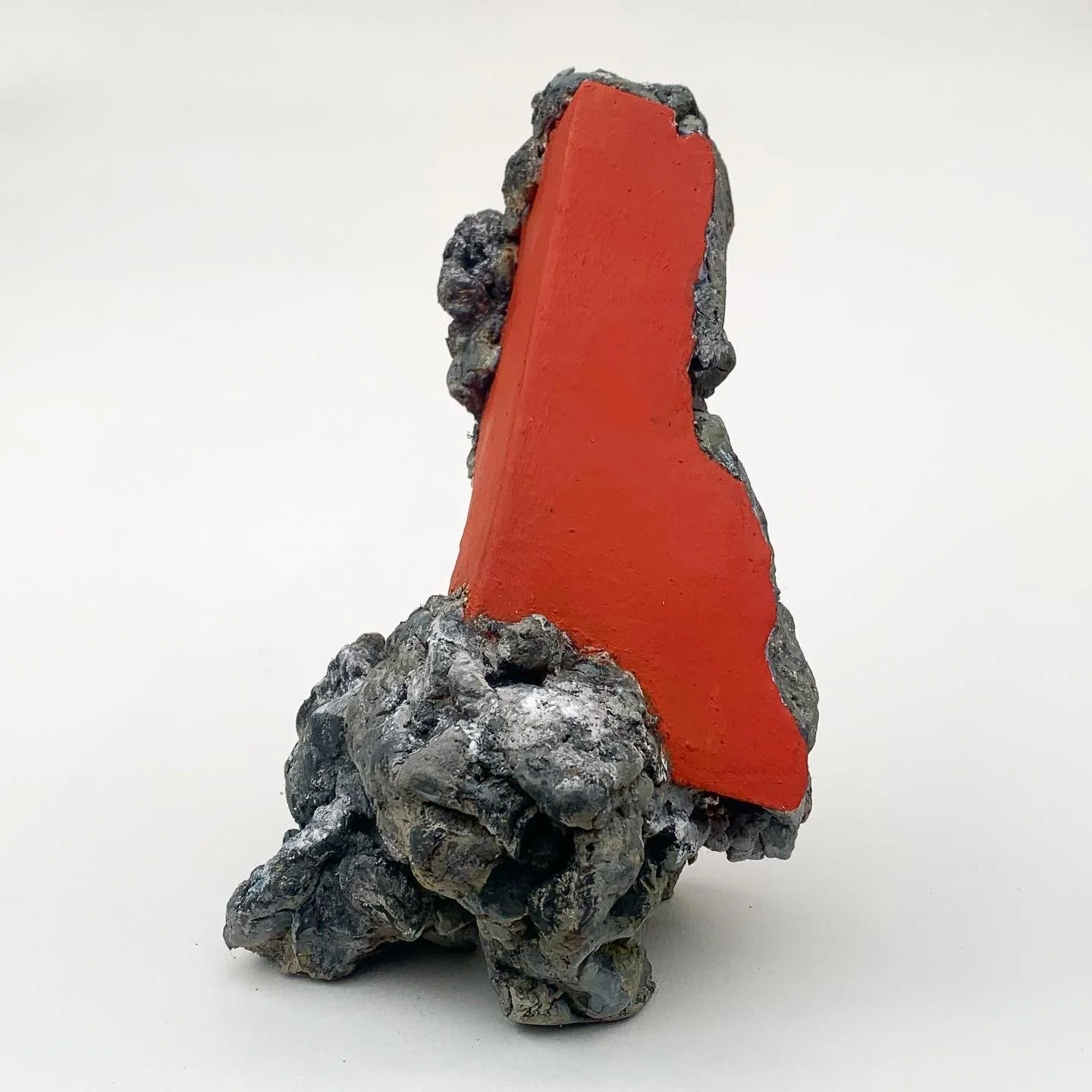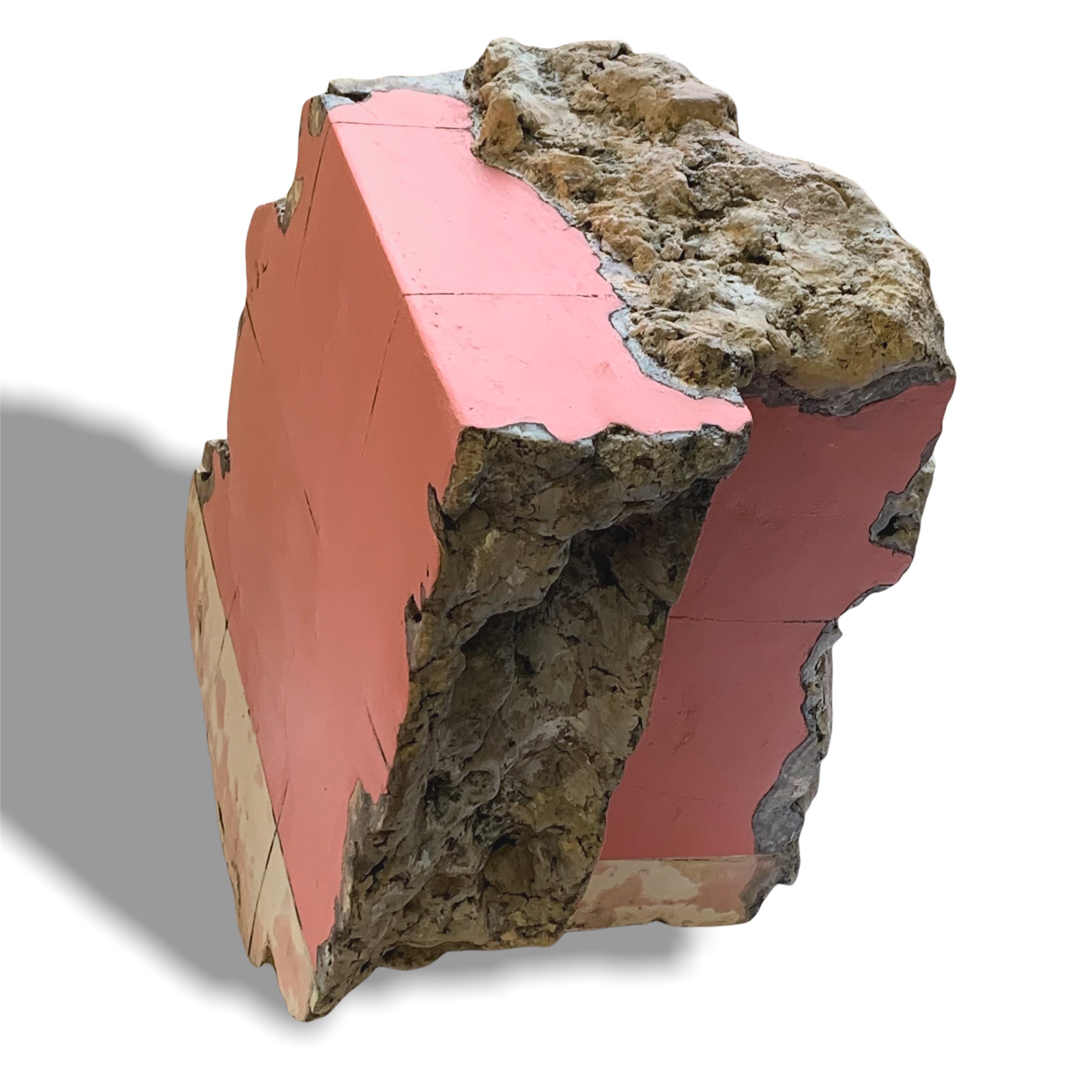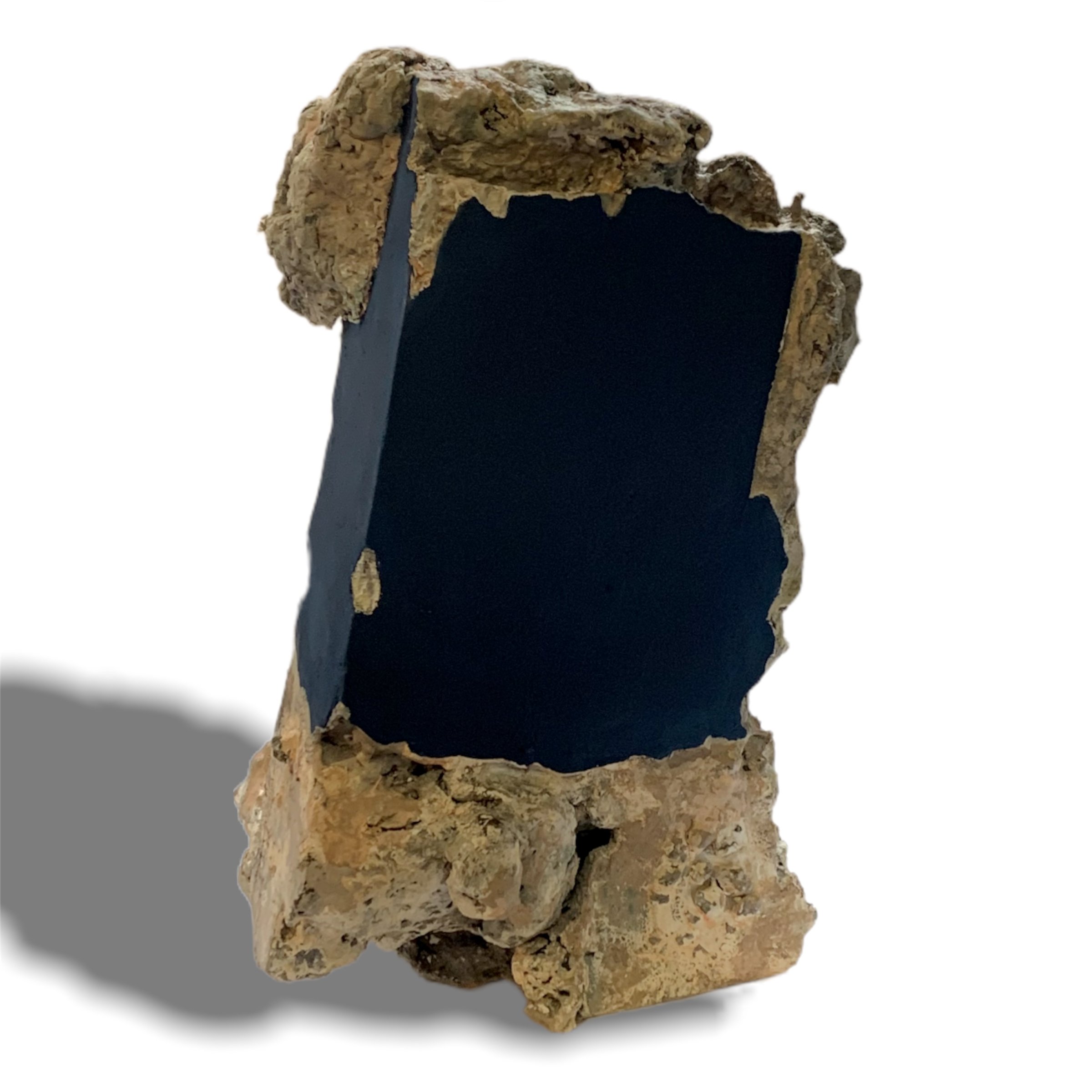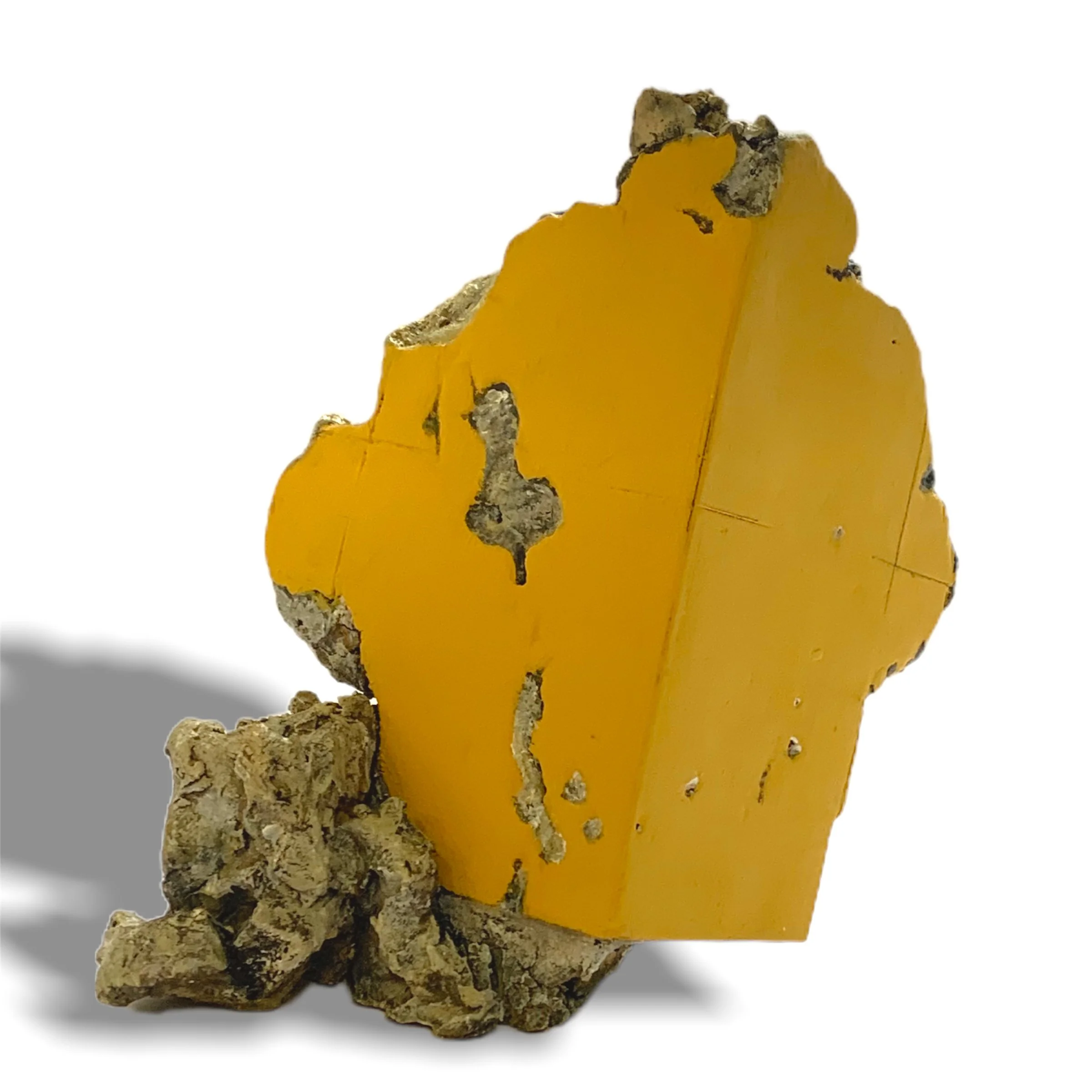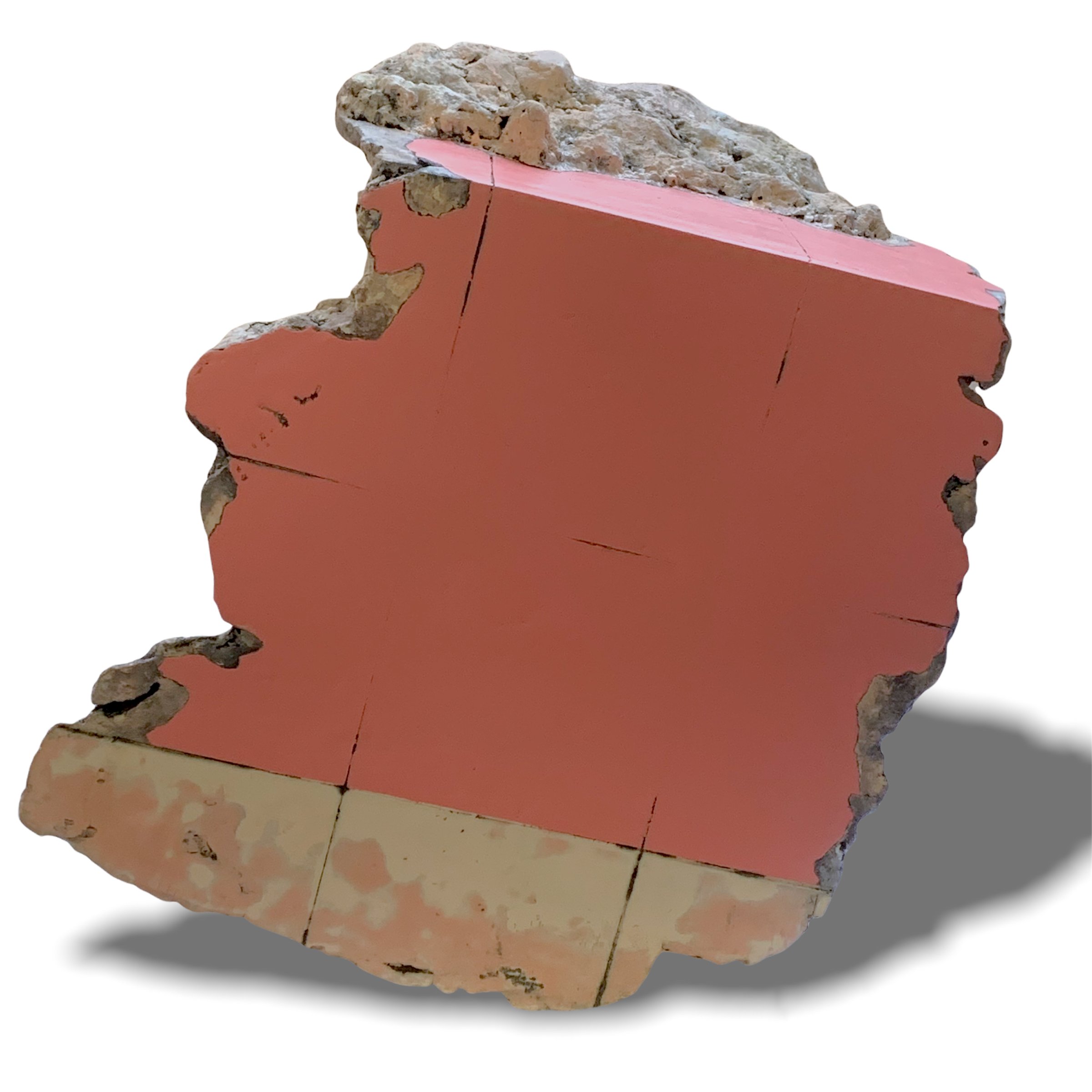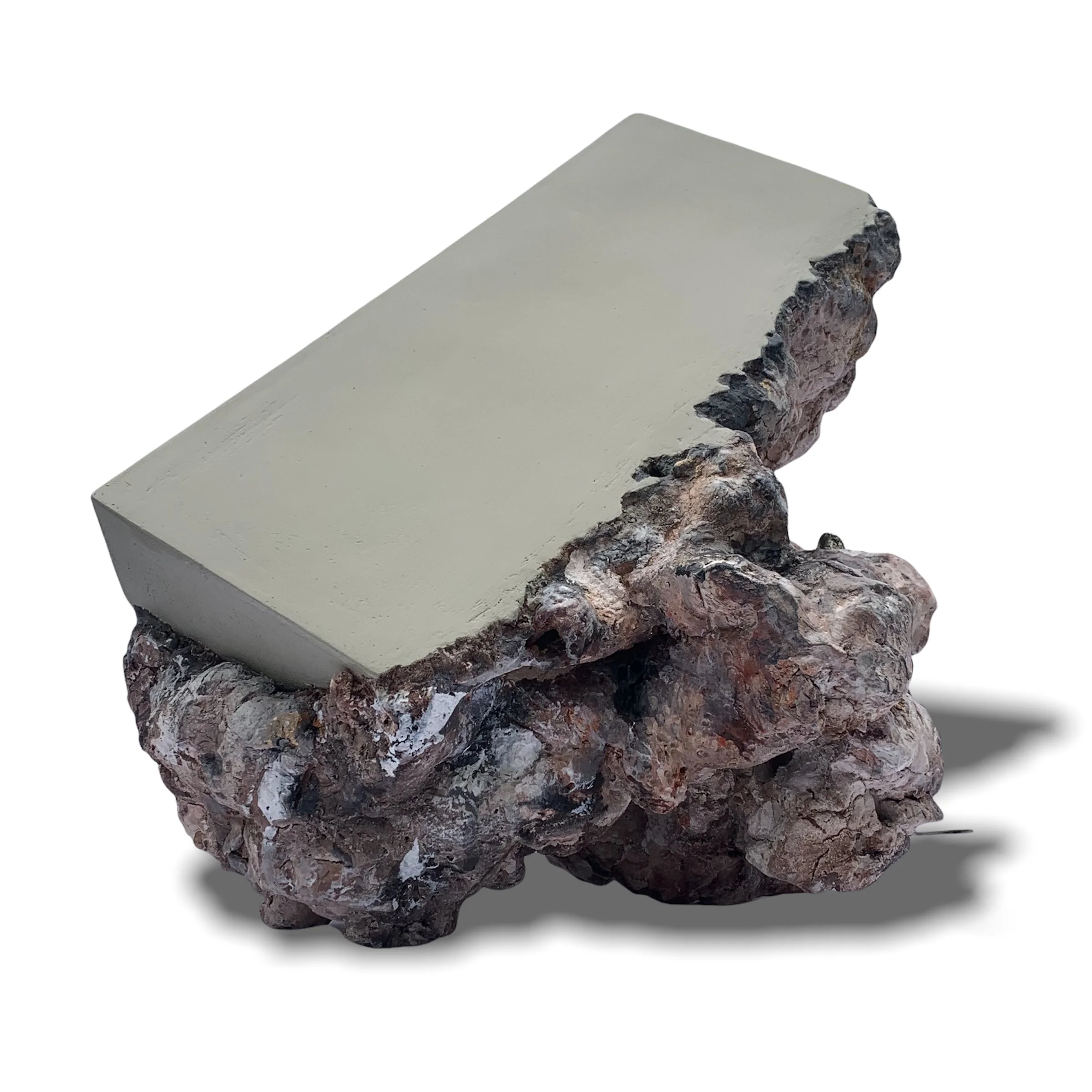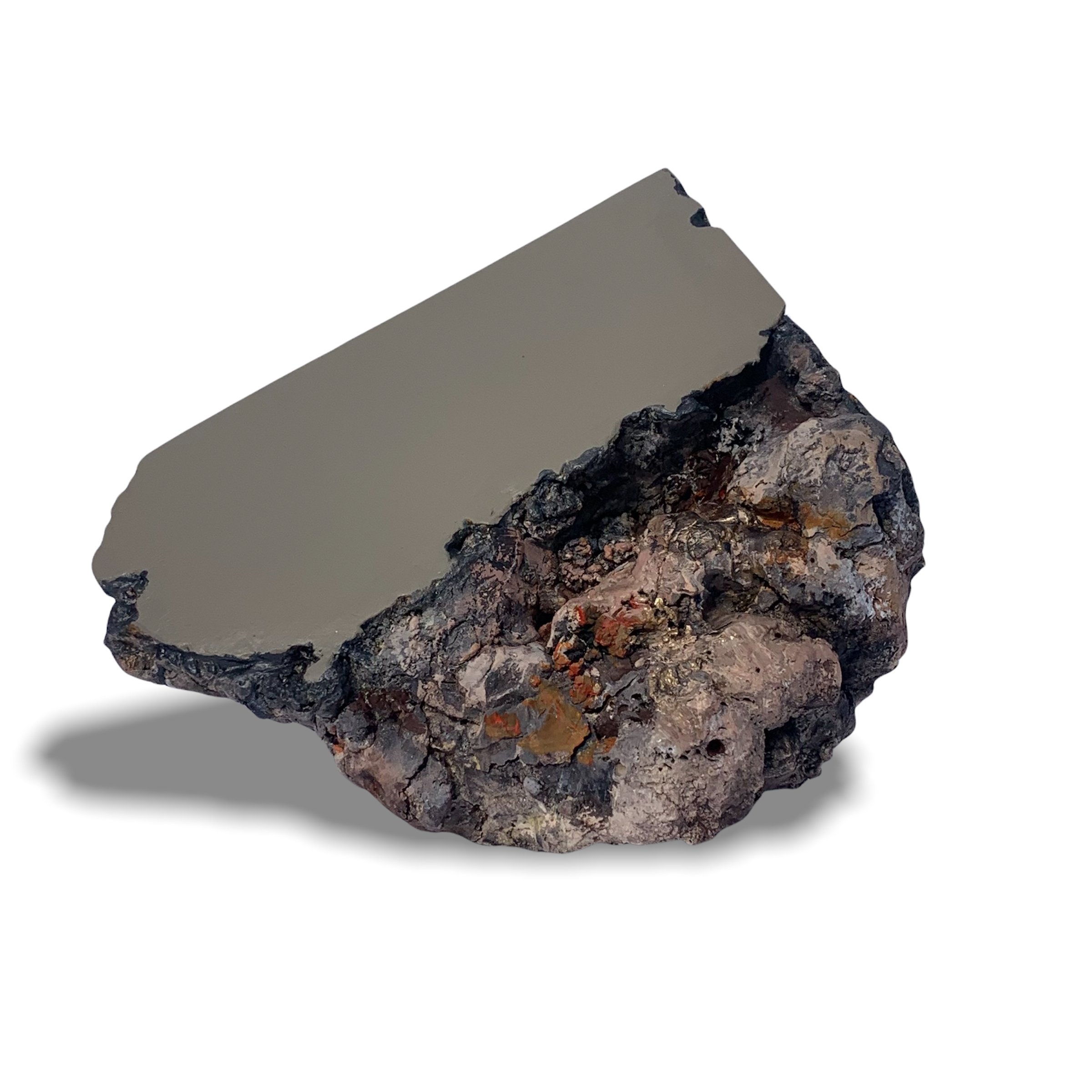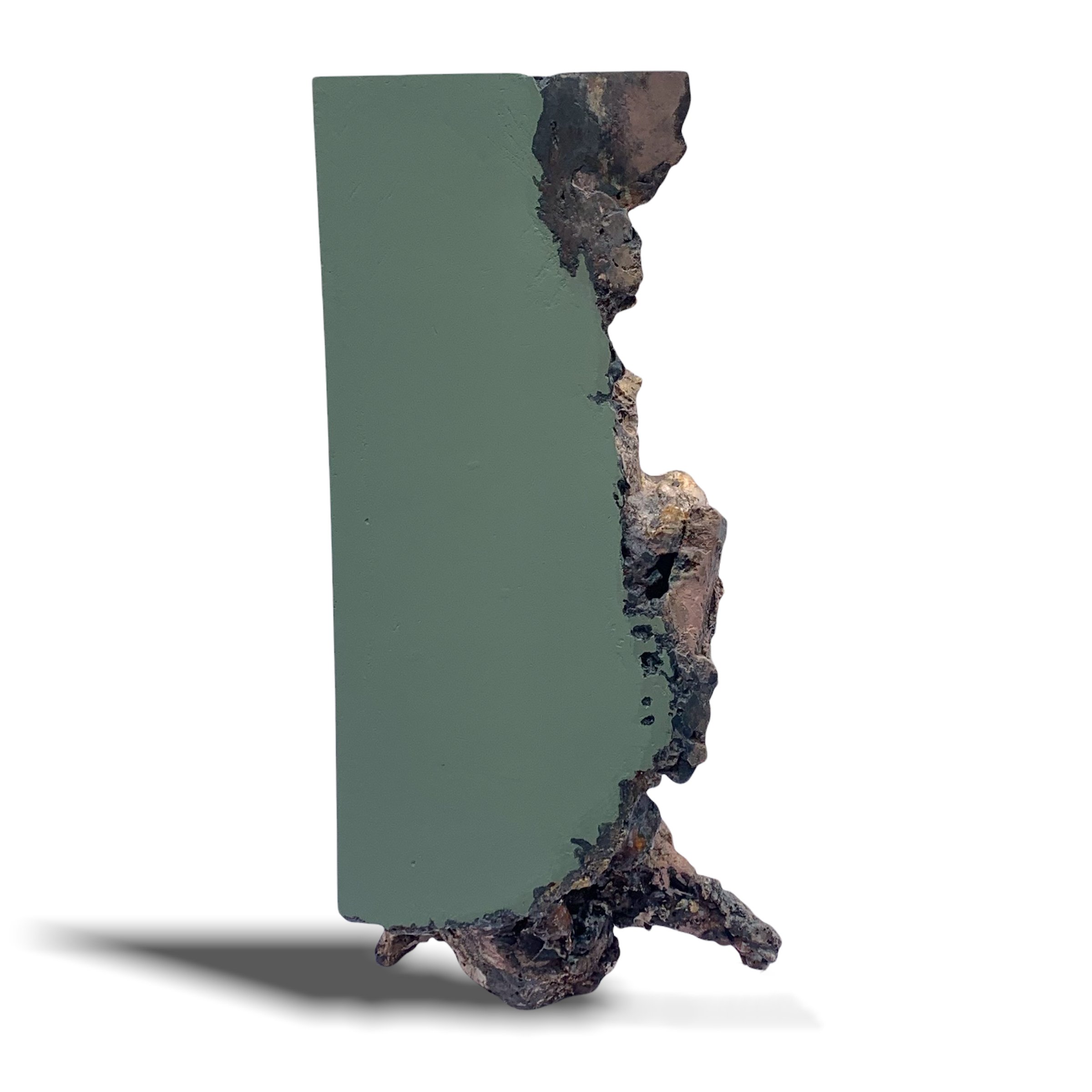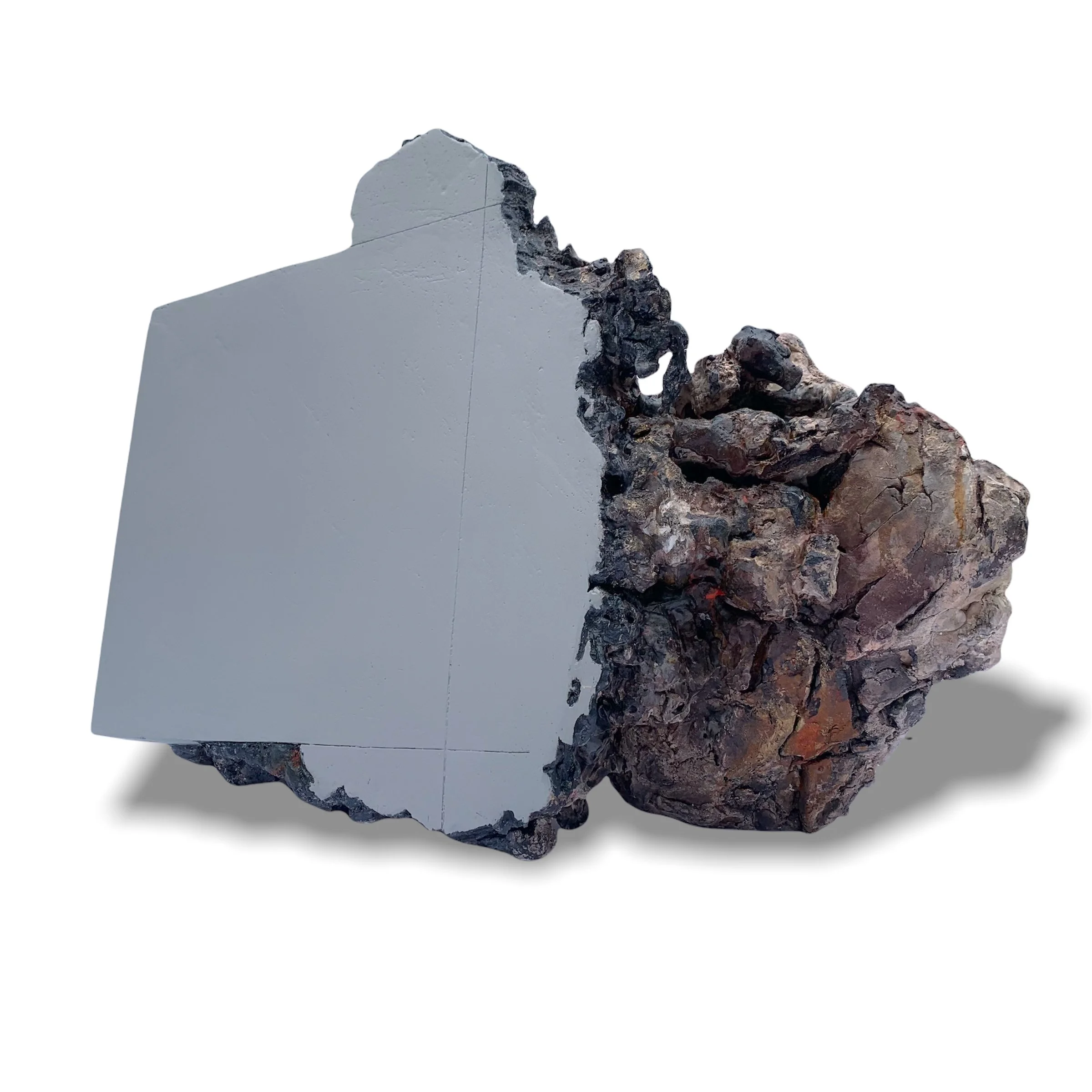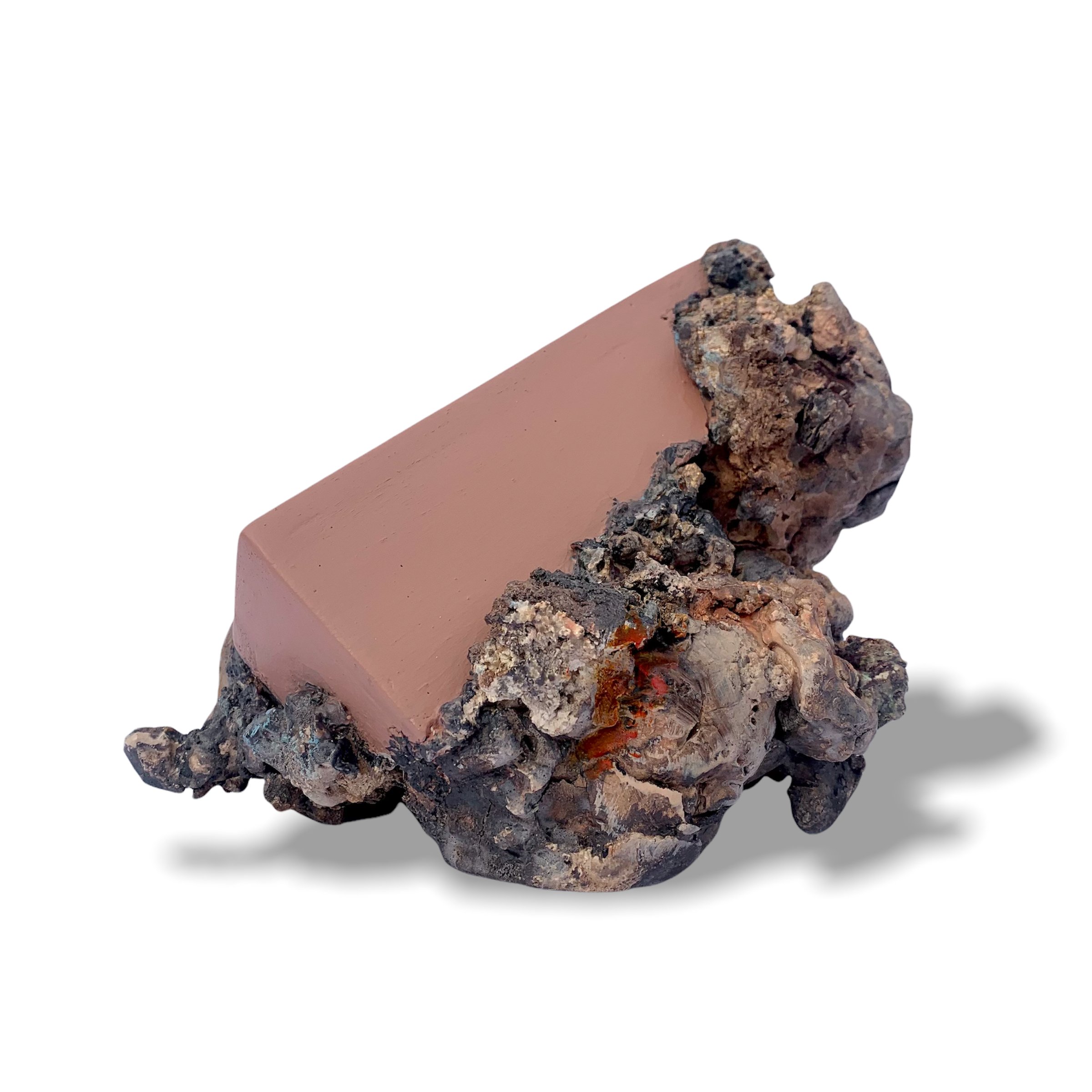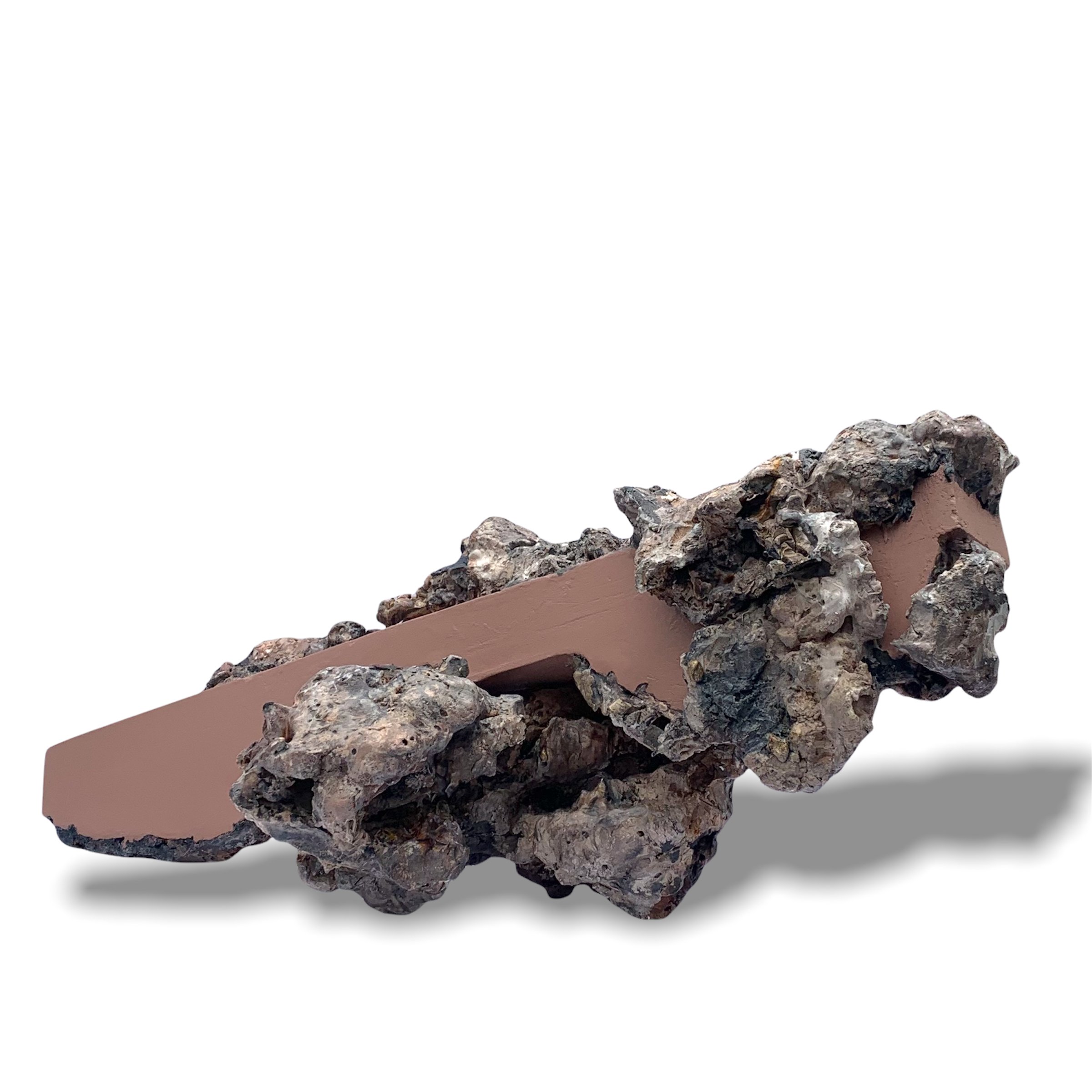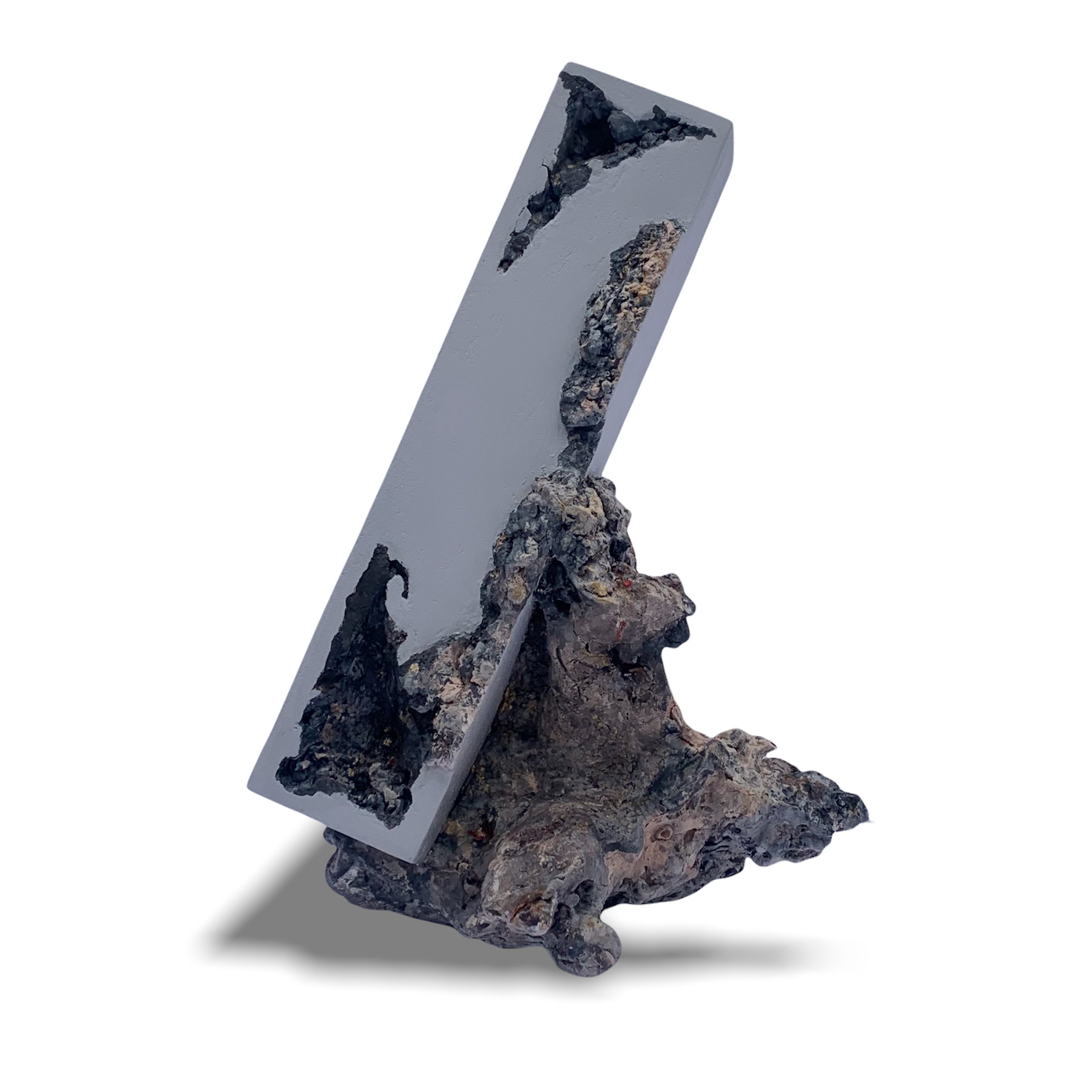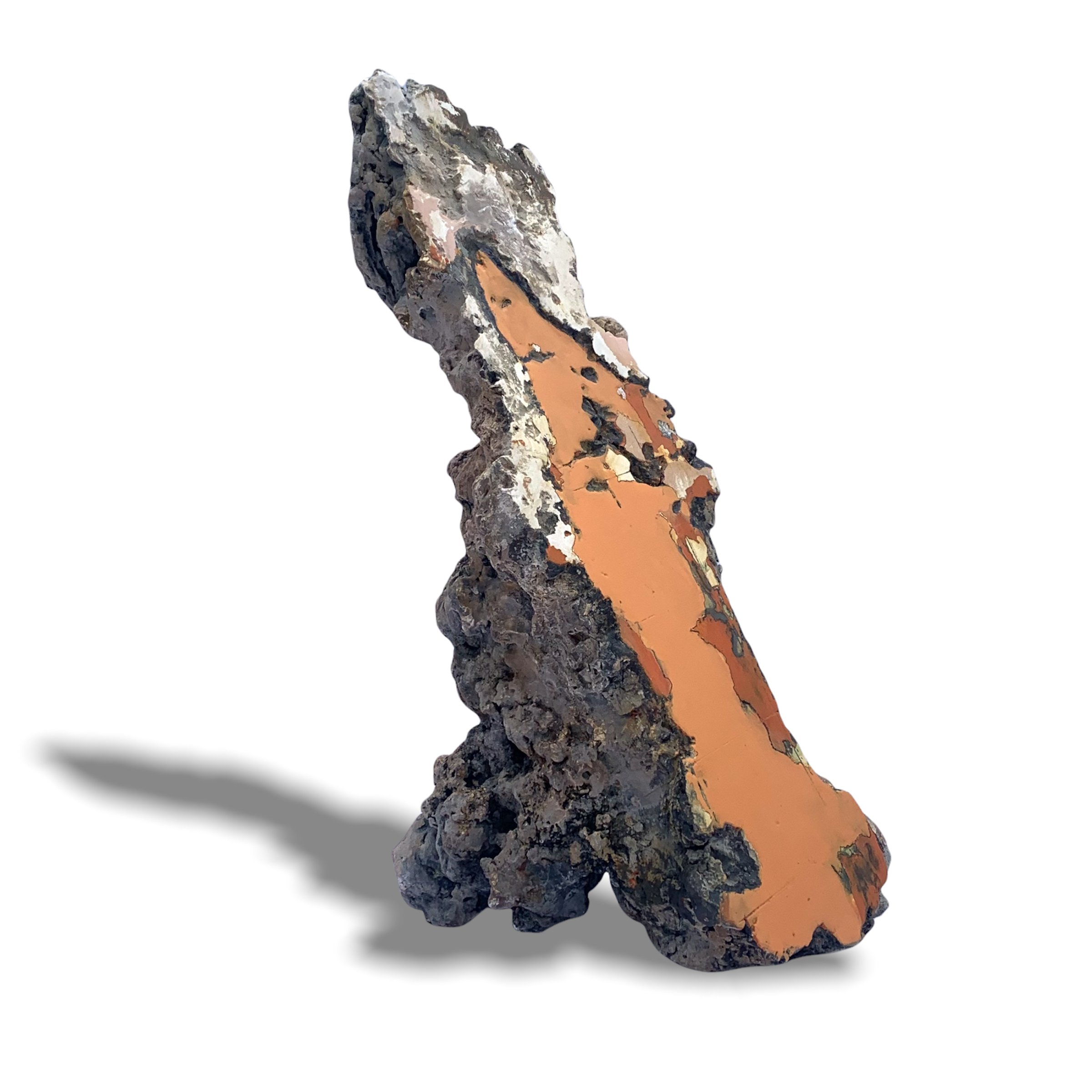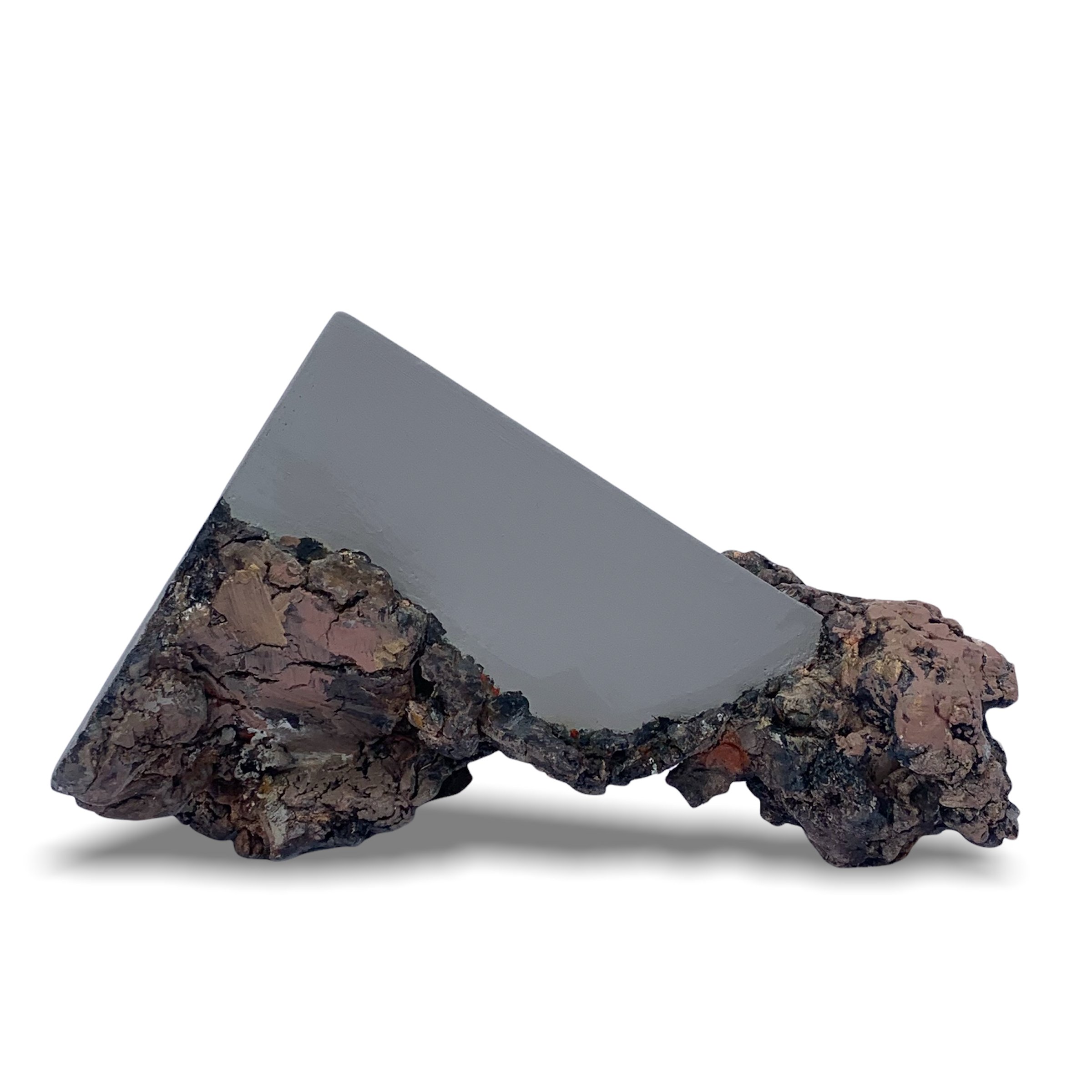Stela
Appleby continues to explore fundamental structure in architecture, nature and anatomy in her recent work. The sculpture investigates industrial & architectural fragments metamorphosed by the ravages of time. Abandonment of structures following economic, natural and manmade disaster inevitably have human fallout. Sustainable redevelopment following disaster is a main objective of post-disaster recovery effort over the past few decades.
The sculpture presents an organic, architectural & personal response to the overwhelming impact of trauma, disaster and redevelopment, exploring new process' and techniques to represent both pathos and moments of joy.
‘I am particularly interested in what happens when a structure is altered, broken, destroyed or reimagined.
Visually I think these ruins/fragments have a conceptual & aesthetic beauty. I think the disfiguration and patina of age tells a beautiful story and suggests a journey that is experienced throughout life. The marks, scars, dints & broken edges enhance the beauty. Rather than considering a broken object ‘destroyed’ I believe the transformation, sometimes to the point of abstraction, is fascinating. I’m intrigued about its journey and particularly enjoy the aesthetic transfiguration’.
Appleby also references the term stele or stela in her recent work; a stone or wooden slab, generally taller than it is wide, erected in the ancient world as a monument The surface of the stele often has text, ornamentation, or both. These may be inscribed, carved or painted. Stelae were created for many reasons; for funerary or commemorative purposes, Ancient Greek and Roman government notices or as boundary markers to mark borders or property lines. Stelae were occasionally erected as memorials to people or events.
‘These sculptures represent an autobiographical series of stela that commemorate and mark important personal events and experiences’.
